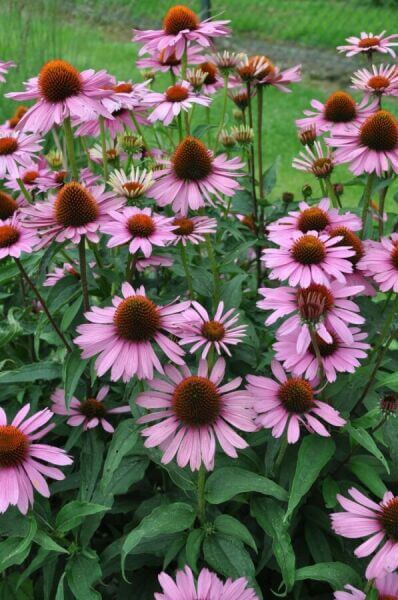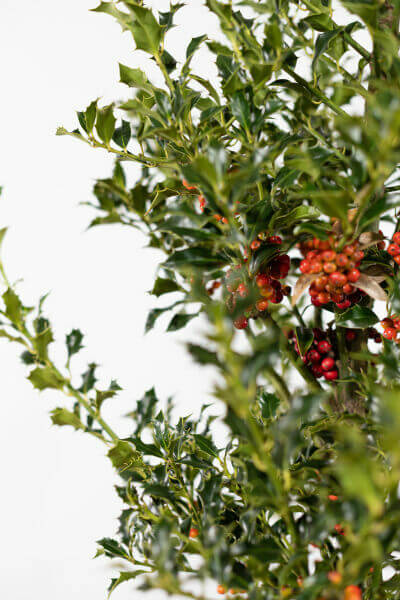Hedge Plants For Innovative Gardens
Hedge Plants For Innovative Gardens
Blog Article
Hedging Plants For Mediterranean Gardens
Improve your garden's appeal with rich hedge varieties such as Yew (Taxus), Thuja, Laurel, Photinia, and Bamboo, celebrated for their structural stability and ecological advantages.
Yew and Thuja supply evergreen coverage and winter season durability, while Laurel offers fast development and broad, fragrant leaves.
Photinia adds seasonal appeal with its lively red foliage, and Bamboo lends a low-maintenance, peaceful ambiance.
These hedges improve air quality, lower noise, and produce tranquil, personal areas.
Appropriate planting, spacing, and upkeep ensure vigorous growth and eco-friendly harmony.
Explore how these rich ranges can raise your garden's beauty and well-being.
Secret Takeaways
Change Your Garden With Lush Hedge Ranges
- Select Yew for its dense, evergreen growth and exceptional durability.
- Opt for Laurel for its fast growth and broad leaves, making sure fast personal privacy.
- Choose Photinia for its vibrant seasonal foliage, which turns a striking dark red.
- Use Bamboo for a low-maintenance, winter-hardy hedge with visual appeal.
- Area plants 2-3 per meter and prune frequently for optimal development and health.
Popular Hedge Plants
When changing a garden with lush hedge varieties, it's essential to consider popular hedge plants such as Yew, Thuja, Laurel, and Photinia due to their special attributes and benefits.
Yew (Taxus) is extremely respected for its durability and thick, green development, making it a prime choice for withstanding landscapes.
Thuja is noted for its evergreen foliage and robust winter durability.
Photinia adds seasonal vibrancy with red leaves that darken in time, producing dynamic visual appeal.
Laurel offers rapid growth and aromatic, broad leaves, perfect for fast privacy.
In Addition, Bamboo is an excellent option for atmosphere, providing a low-maintenance, winter-hardy choice that enhances the garden's aesthetic with its elegant, swaying canes.
These choices accommodate a variety of horticultural needs and choices.
Benefits of Garden Hedges
Garden hedges offer a multitude of advantages, making them an important addition to any landscape. These natural barriers are affordable to implement and supply considerable wind protection, boosting air flow and contributing to sound decrease. The dense foliage of hedges like Thuja and Beech makes sure privacy by blocking presence, producing a serene and remote environment.
Hedges also play a crucial function in microclimate regulation, supplying a stable environment that cultivates plant growth and minimizes temperature level fluctuations. Their detailed leaf structures filter pollutants, enhancing air quality and contributing to a much healthier garden ecosystem.
Moreover, hedges excel in sound reduction, soaking up and deflecting sound waves to lower ambient sound levels. This double functionality of offering both acoustic and visual privacy improves the total serenity and visual appeal of any garden.
Planting and Maintenance Tips
For a successful hedge, precise preparation of the planting location is crucial. Ensure the soil has appropriate pH and drain to support strong root advancement.
Area the plants properly for the picked types. Water the hedge frequently throughout its preliminary development phase, adjusting as needed with seasonal changes.
Implement a systematic insect control and disease prevention technique, using organic or chemical treatments when required. Routinely examine for aphids, mites, and fungal infections.
Apply mulch to retain moisture and suppress weeds. Seasonal pruning promotes thick growth and air blood circulation, necessary for plant health.
Following these standards will assist you cultivate a dynamic, well-kept hedge that boosts the appeal of your garden.
Spacing and Cutting Guidelines
Spacing and Trimming Standards
Correct spacing and cutting are essential for cultivating healthy, visually appealing hedges. Adequate spacing makes sure each plant gets sufficient nutrients, light, and air flow.
Follow these standards for ideal hedge maintenance:
- Spacing: Position hedge plants 2-3 plants per meter to motivate robust development.
- Pruning Techniques: Regular pruning is necessary for keeping wanted hedge height and shape. Cut new development in summer and cut back older wood during winter.
- Seasonal Care: Adjust trimming methods and schedules according to seasonal requirements to ensure plant health.
- Hedge Height: Regularly monitor and trim to keep the wanted hedge height and accomplish uniform visual appeals.
Abiding by these steps will ensure your hedge grows, boosting both the appeal and functionality of your garden.
Choosing the Right Hedge
Picking the Right Hedge
Choosing the suitable hedge includes assessing elements such as mature height, foliage density, and ecological resilience. Effective hedge plant selection requires understanding each species' growth characteristics and site-specific adaptability.
For example, Yew (Taxus) provides outstanding durability and thick development, while Thuja is significant for its winter season resilience. Additionally, thinking about maintenance requirements is crucial; fast-growing species like Laurel or Privet need routine cutting, whereas low-maintenance alternatives like Bamboo or Ivy might be more effective for those looking for minimal maintenance.
Environmental factors such as soil type, light schedule, and moisture conditions need to also direct the choice process. This careful method guarantees the chosen hedges will flourish, supplying both practical and aesthetic advantages to the garden landscape.
Delivery and Planting Recommendations
To ensure your hedge plants grow, they should be provided by specialized carriers and planted promptly upon arrival.
Follow these vital steps for successful planting:
- Soil Preparation: Enhance the soil with natural matter to improve drainage and nutrient content.
- Planting Depth: Develop a trench two times the width and equal to the depth of the root ball.
- Watering Techniques: Water completely after planting, keeping the soil regularly wet but not saturated.
- Mulching: Use a layer of mulch to maintain wetness and suppress weeds.
Customer Support and Service
Provided the important function of prompt help in horticultural pursuits, our consumer assistance team is available six days a week through telephone, email, and social media to provide professional recommendations and quickly attend to any issues. Their devotion to fast action times makes sure client fulfillment by resolving queries related to plant health, optimal planting methods, and upkeep schedules.

Accessibility
6 days a week
Within 24 hr
This comprehensive support group, strengthened by an outstanding 9.3/ 10 customer score, highlights our dedication to boosting the gardening experience for every client.
Frequently Asked Questions
For How Long Does It Take for Hedge Plants to Establish?
Hedge plants hedging plants normally require one to three years to become fully established, with the exact duration varying by species and growing conditions.
Effective care throughout this critical duration is necessary for robust development. Constant watering, watchful weed control, and suitable fertilizer application are critical in promoting strong root development.
For example, fast-growing types like Laurel might develop faster, while slower-growing varieties such as Yew might take longer. Diligent upkeep speeds up the facility process, resulting in healthy and thick hedges.
What Are the very best Hedge Plants for Privacy?
The question of the very best hedge plants for personal privacy includes assessing evergreen and deciduous options.
Evergreen hedges like Thuja, Laurel, and Cypress supply year-round protection, guaranteeing continuous personal privacy.
In contrast, deciduous hedges such as Beech offer seasonal personal privacy, shedding leaves in cooler months.
Key maintenance pointers for privacy hedges include routine trimming, fertilizing in spring, and correct spacing-- usually 2 to 3 plants per meter.
Furthermore, constant watering and persistent weed removal are vital for promoting healthy, dense development.
Can Hedge Plants Draw In Wildlife to My Garden?
Yes, hedge plants can attract wildlife to your garden by offering essential advantages like shelter, food, and nesting sites, thereby improving local biodiversity. For circumstances, yew, holly, and laurel are excellent for bring in birds, while ivy supports a variety of pests.
Nevertheless, it is necessary to keep in mind that there are some drawbacks, such as increased upkeep to manage insects and routine upkeep. Thoroughly selecting and preserving hedge ranges can help stabilize these advantages and disadvantages, eventually promoting a lively and sustainable community in your garden.
Exist Any Flowering Hedge Plants Available?
Yes, there are flowering hedge plants offered that can boost the beauty of your garden.
For example, Elaeagnus, likewise referred to as Olive Willow, produces fragrant white flowers in the fall, adding a touch of sophistication.
Photinia, another popular option, showcases vibrant red leaves that develop into an abundant green, developing a vibrant visual effect throughout the seasons.
To ensure these plants prosper, it's important to practice correct pruning methods and seasonal maintenance, such as cutting brand-new development in the summer season and cutting back in the winter.
These measures will help preserve the health and visual appeal of your blooming hedges.
How Do I Avoid Bugs in My Hedge Plants?
To avoid bugs in hedge plants, use natural bug control approaches and keep correct hedge care. Present beneficial insects like ladybugs, which prey on harmful pests, to develop a well balanced environment.
Frequently check your hedges for indications of problem and without delay get rid of any afflicted parts to avoid the spread. Guarantee the health of your hedges by applying balanced fertilizers and providing appropriate water.
Make use of mulching to keep soil moisture and proper spacing to reduce plant tension and promote robust development. These practices collectively help in minimizing bug problems and preserving a healthy hedge.
Conclusion
In essence, choosing the ideal hedge ranges such as Yew, Thuja, and Laurel can transform any garden into a tranquil sanctuary. These plants offer year-round greenery, enhance visual appeal, and offer useful advantages like noise decrease and wind security.
Appropriate planting techniques, precise spacing, consistent watering, and seasonal trimming are essential for optimum development.
Reputable delivery services and skilled client assistance make sure a smooth experience from purchase to planting, making it simpler than ever to raise your outdoor space.
Garden hedges use a plethora of benefits, making them an important addition to any landscape. These natural barriers are affordable to carry out and provide substantial wind protection, boosting air circulation and contributing to sound decrease. The dense foliage of hedges like Thuja and Beech guarantees personal privacy by obstructing exposure, developing a peaceful and remote environment.

Pruning Strategies: Regular pruning is vital for keeping wanted hedge height and shape. Trim new growth in summertime and cut back older wood throughout winter season.
Report this page